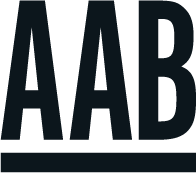Anderson Anderson & Brown LLP (AAB), one of the UK’s leading independent firms of Chartered Accountants & Business Advisors, has announced the launch of their unique VAT Place of Supply Tool, which they have pioneered the development of in-house to assist businesses to ensure that the correct VAT treatment is applied.
The interactive tool, which supports businesses’ existing VAT processes and controls, guides users through the appropriate VAT decision making process. The tool documents that process, providing a clear audit trail which demonstrates to HMRC that reasonable care has been taken. For suppliers, it ensures VAT is only charged when due, avoiding lengthy, and potentially costly, arguments with customers. For customers, it allows the early identification of over charged VAT meaning it can be corrected before it becomes a problem.
AAB introduced the tool following a visible increase in HMRC challenging input tax claims where VAT should not have been charged in the first instance. HMRC are rejecting these claims on the basis that the correct route to recover this “VAT” is direct from the supplier and not from HMRC. This position was reaffirmed recently in HMRC’s Revenue and Customs Brief 4/2017 following the Supreme Court decision in Investment Trust Companies (ITC) (in liquidation) v HMRC.
Provided you can get the VAT back from your supplier, this is simply an administrative inconvenience. However, given the recent financial climate, in many cases a supplier you dealt with in 2014 may no longer be in existence; making recovery of the overcharged VAT impossible.
Furthermore, HMRC’s approach is transferring the responsibility for checking that the correct VAT treatment has been applied on to the customer. In the North Sea, the provision of services for oil, gas and renewables projects are covered by complex place of supply rules. This complexity often leads to the supplier taking the easy option of simply charging VAT to UK based customers. As they have overcharged VAT, there is no risk to the supplier of a penalty from HMRC
However, where the customer has recovered the incorrectly charged VAT, HMRC have argued that, the customer should have been aware of the correct VAT treatment. Consequently, they have treated the over claim as a failure by the taxpayer to take reasonable care. Where HMRC consider an error has been made as a result of carelessness by the taxpayer, a penalty of up to 30% of the VAT over claimed can be charged.
Alistair Duncan, Director of Indirect Tax at AAB commented “Since the introduction of VAT, taxpayers have complained that they have been asked to be unpaid tax collectors. Increasingly, they are also being asked by HMRC to act as unpaid VAT inspectors too. It is generally accepted that it is the supplier’s responsibility to get the VAT liability of a supply right. On many occasions, where there is doubt about the treatment, the supplier will “err on the side of caution” by charging VAT on the supply. The supplier’s thinking is that they will not get a penalty if they over declare VAT. The thought process until now was that the customer would be able to recover this anyways, but that is incorrect.
At AAB, we recognise the particular challenge that the complex place of supply rules creates for both suppliers and customers and we developed our unique VAT Place of Supply tool in response to this challenge. Feedback received incudes comments by HMRC on a VAT inspection that use of this tool demonstrated the taxpayer’s commitment to ensure reasonable care has been taken in relation to their VAT compliance responsibilities.
Our advice – Don’t err on the side of caution, make sure the treatment is correct.”









